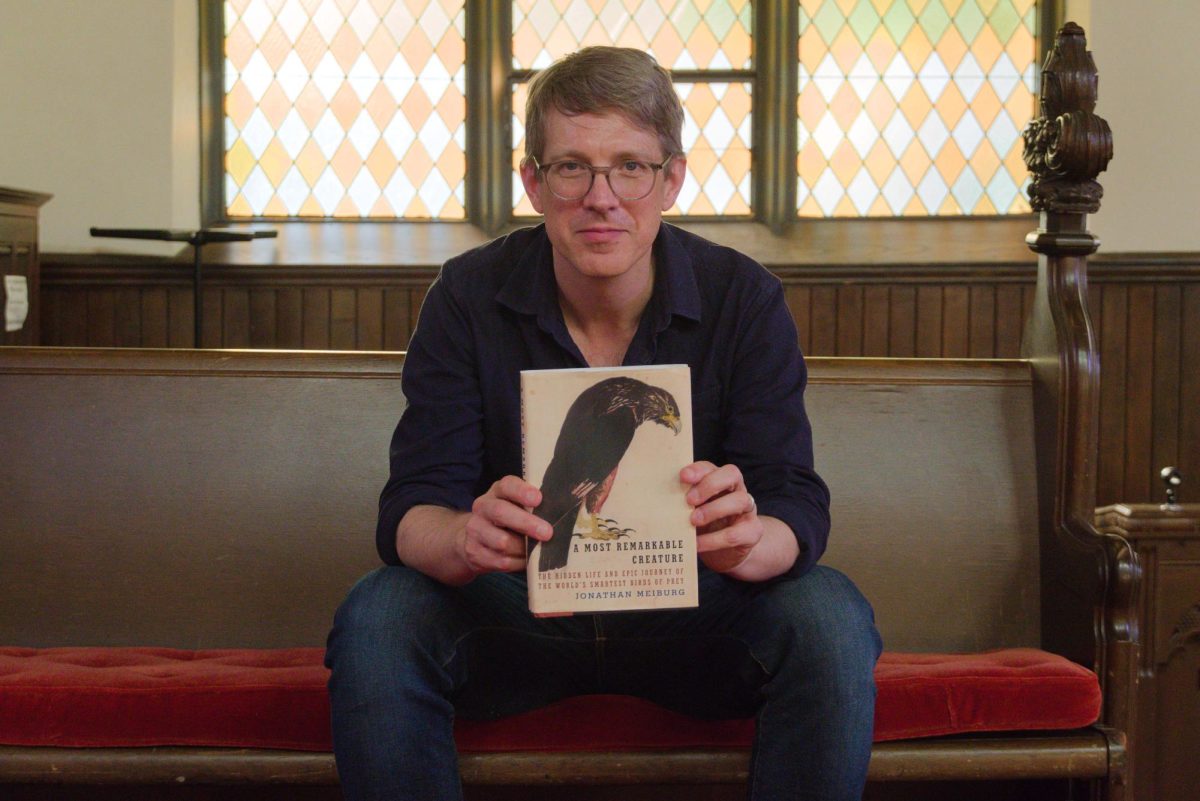Faulconer Gallery is currently housing the “1966 Yearbook Project” exhibition, a powerful compilation of images from Grinnell during the years 1965-1966. The yearbook was created as a social documentary of life on campus during a period of turmoil both on campus and in society at large.
The idea for this historical publication to be turned into a gallery exhibit came from Kay Wilson, curator of the gallery, and Milton Severe, Director of Exhibition Design. In 2009, Henry Wilhelm, one of the photographers and compilers of the yearbook, received an email and immediately thought it was a great idea. The yearbook itself held so much history about how the college became the social justice oriented place that it is today.
“The first was that we changed the name from Cyclone, because cyclone meant nothing to the outside world. So we established the name “Grinnell College 1966,” which were the two key things: where and when,” Wilhelm said. “We approached it as a documentary on college life and got rid of all the usual conventions. No posed senior pictures, no posed team or club pictures, and the whole subject of sports in this yearbook was a radical departure from what was usual at the time. Students really supported the idea and we sold more presubscribed copies than ever before in history.”
Photos in the yearbook ranged from a meet and greet for first years before school started to men on north campus destroying pianos in a competition. The photos are beautiful, but equally, they contain a great deal of commentary on how the college functioned at the time. One aspect of focus was the way women were treated unequally by the college. There are images of people having to leave after being suspended or expelled for being suspected of spending the night with a person of the opposite sex. Students became angry and started fighting back against the sexist regulations, expressed in a photo of women at a meeting holding signs.
“We thought of it as a historical book in a time of rapid change,” Wilhelm said.
When it came to the actual publishing of the yearbook, Wilhelm and his fellow compilers encountered difficulty. The college was given the original compiling of the yearbook to review before printing and decided that there were multiple liabilities.
“In reality, the college just didn’t want the yearbook to be published and it was, in a sense, banned. That was extremely upsetting to a lot of people on campus,” Wilhelm said. “It became very clear that the college wanted to do, but failed to do due to the copyright, was seize the book, probably bring in another editor to ‘sanitize’ it, to remove everything they didn’t like: drug pictures, students being suspended, comments about women, the whole thing.”
Wilhelm and his fellow editors had help from an attorney alum and notified the college that they were in possession of stolen property by holding onto the yearbook. Although, even after getting the yearbook back, it was almost impossible to find somewhere willing to publish the book. All of the publishing companies were afraid of being sued by the college, due to the publicity of the conflict between college and yearbook editors.
Twenty years later, Wilhelm was reminded of the yearbook and decided that it was time to have it published.
“I thought, ‘Well, we should at least tell the college what we’re planning to do.’ If not any other reason, we need the names and addresses of all four classes from the alumni office. Then President George Drake heard through the grapevine that the class of ’66 was planning on publishing the yearbook, so he invited me over to the college to tell him what I’m doing,” Wilhelm said. “In less than five minutes George said, ‘Well this is a history book, we [Grinnell College] should publish it.’ I was astonished.”
The yearbook was published in 1986 and the gallery now sports prints that have been digitally re-mastered from the original negatives. Students are encouraged to visit the exhibition and get a glimpse of Grinnell’s powerful history through beautiful photography. There is a station in the middle of the gallery that allows for students to print out any photo from the gallery. Donations are appreciated and the proceeds go to support preservation activities in Burling Library’s Special Collections and Archives and the Faulconer Gallery’s Permanent Art Collection.
Categories:
Documentary photography of changing times draws crowds
May 4, 2012
1
0
More to Discover
























































Ron Wright • May 16, 2012 at 10:42 am
RADICALS! Wow, I’m impressed. I never would have guessed that such radical students would be found at the small midwestern college of Grinnell. That students would want to break from convention and publish a yearbook in their own image, Imagine that! No staid photos of club members, but instead photos of students being expelled. Rather than sports team photos, include shots of women holding picket signs protesting the sexual discrimination against women. Congratulations to President Drake and Grinnell College for recognizing this as an historic document and publishing it for the sake of preserving the history of a college’s turmoil experienced in the 1960’s.